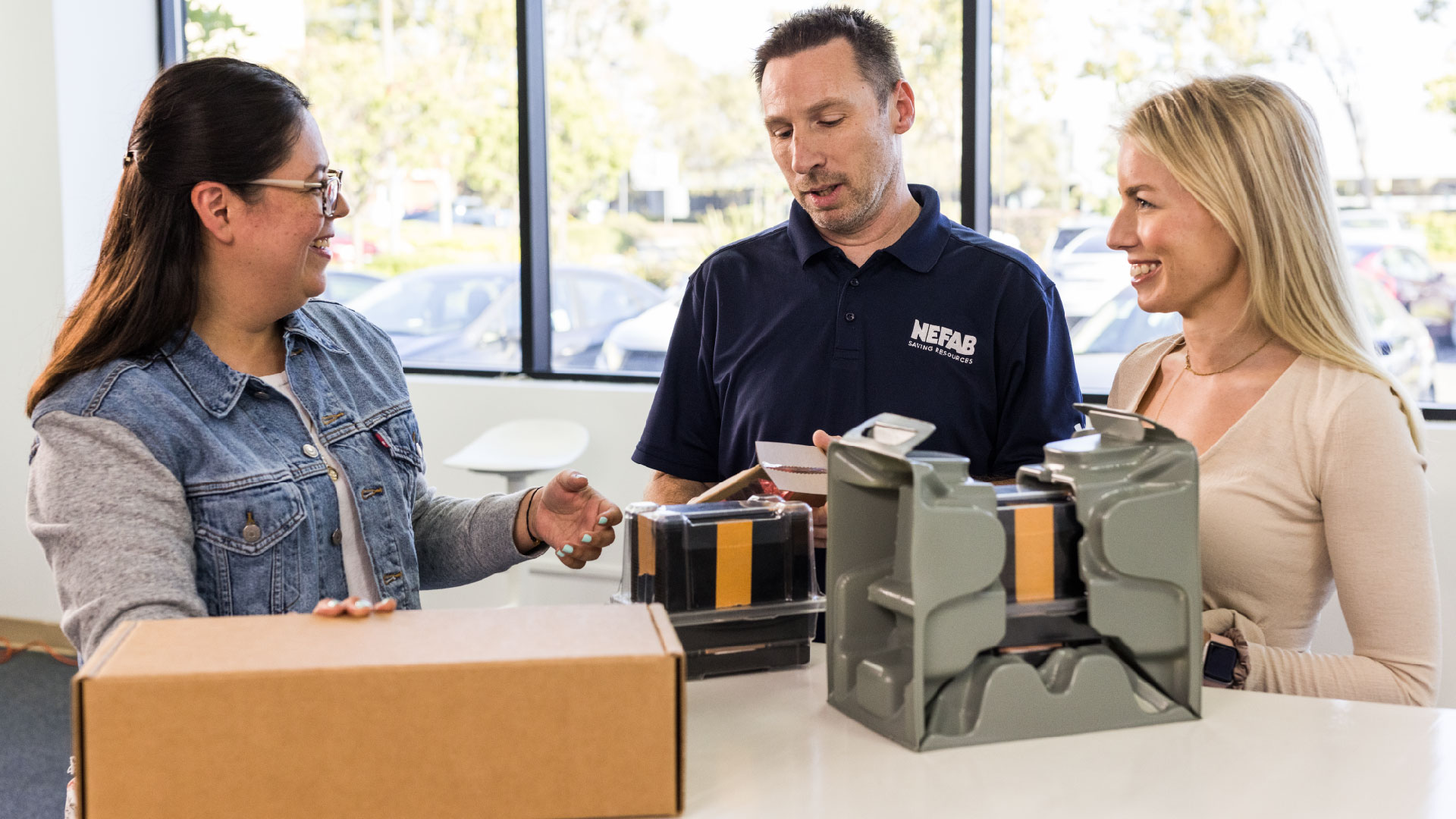- News & Insights
- 2023
- How to design packaging in a sustainable way?
- Engineering
- Sustainability
- Innovation
- Telecom
- Datacom and Cloud
NEWS & INSIGHTS
Sustainable Packaging Design
How to design packaging in a sustainable way?
To effectively decrease waste, the industry must focus on developing innovative, sustainable packaging.
Although 2023 marked the mid-point in the implementation of the Agenda for Sustainable Development, we are currently not on track in reaching them by 2030[1]. As the clock is ticking, more and more governments are introducing regulations aiming to foster eco-friendly solutions. Sustainability has been widely backed by the private sector with 90% of executives believing sustainability is important, (World Economic Forum). The same study shows, however, that only 60% of them have appropriate strategies in place. Sustainability became a buzzword and without a clear commitment to its principles and its purpose at the core of the business, the results are hard to materialize. The transition requires rethinking and redesigning every single aspect of its operation from governance to product design.
The packaging industry, especially, has vested significant resources in developing innovative sustainable packaging solutions. The increased use of packaging along with low reuse and recycling rates slows the transformation toward a circular economy[3]. In 2021, packaging waste generated was estimated at 188.7 kg per inhabitant in the EU[4]. Should the current trend persist, there is a projected rise of 70% in the annual consumption of plastic and the generation of waste by the year 2040, as compared to the levels observed in 2020[5]. The way we design the packaging can help reduce its carbon footprint. To effectively decrease waste the industry must focus on developing innovative, sustainable design packaging - see below as we take a close look at the key principles to keep in mind.
Designed to minimize impact
Whether or not a product reaches its destination without any damage or wastage depends heavily on the packaging design. The key is to create sturdy packaging to protect the shipped goods while reducing material consumption at the same time. Simply shrinking the size of packaging by eliminating unnecessary space and switching to lighter materials can mitigate the environmental impact in the packaging lifecycle. Lighter and volume-optimized packaging also increases the efficiency of transport, especially considering weight or space limitations. This, in turn, results in significant savings in energy, water, greenhouse gas emissions, and transport costs[6].
Designed for Circularity
Using recycled materials in packaging not only reduces waste but also helps to create circular markets for packaging recovered from households and other sources. In this case, the design process must first consider things like, for instance, product protection, packaging manufacturing process, or logistics before making the final call of how much recycled content can be used in the packaging and whether or not it would have an impact on e.g., its functionality or product safety. Leveraging post-consumer waste decreases the need for virgin materials and subsequently saves natural resources as manufacturing recycled material uses less energy and water than raw materials.
Circularity is not the same as only using recycled materials. A truly circular packaging design considers the whole lifecycle of a packaging product, from sourcing to production to distribution and finally to disposal, and ideally, re-use of recycled materials in the same packaging. Packaging is a vital component of the supply chain hence its uses should be considered within the larger ecosystem.
Commitment to Sustainability Principles
The sustainable packaging design process requires commitment from all parts of the business. It is, therefore, important to have a common understanding of what sustainability means for the company and how will it be implemented across the entire organization. Nefab has recently introduced a set of guidelines for its engineers and designers that are core to our design process of innovative sustainable packaging. The document focuses on the key principles, including reducing the material used in packaging, fostering solutions related to its reusability, increasing the recycled content as well as focusing on the circular design. Along with the team training and GreenCalc LCA software, we hope to continue to drive sustainability in our packaging and reduce our carbon emissions for the benefit of our customers and the environment.
We save resources in supply chains, for a better tomorrow.
Want to learn more?
GET IN TOUCH
Contact us to learn more about our sustainable solutions driving supply chains forward.
LEARN MORE
GreenCALC
Nefab’s own certified calculator measures and quantifies financial and environmental savings in our solutions
Sustainable Solutions
Engineered packaging for sustainable supply chains
Sustainable Materials
Fiber-based packaging and raw materials

